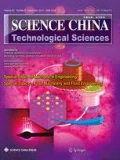Abstract
Bio-inspired intelligence is in the spotlight in the field of international artificial intelligence, and unmanned combat aerial vehicle (UCAV), owing to its potential to perform dangerous, repetitive tasks in remote and hazardous, is very promising for the technological leadership of the nation and essential for improving the security of society. On the basis of introduction of bio-inspired intelligence and UCAV, a series of new development thoughts on UCAV control are proposed, including artificial brain based high-level autonomous control for UCAV, swarm intelligence based cooperative control for multiple UCAVs, hybrid swarm intelligence and Bayesian network based situation assessment under complicated combating environments, bio-inspired hardware based high-level autonomous control for UCAV, and meta-heuristic intelligence based heterogeneous cooperative control for multiple UCAVs and unmanned combat ground vehicles (UCGVs). The exact realization of the proposed new development thoughts can enhance the effectiveness of combat, while provide a series of novel breakthroughs for the intelligence, integration and advancement of future UCAV systems.
Similar content being viewed by others
References
Kennedy J, Eberhart R, Shi Y H. Swarm Intelligence. San Francisco: Morgan Kaufman Publishers, 2001
Bonabeau E, Dorigo M, Theraulaz G. Inspiration for optimization from social insect behavior. Nature, 2000, 406: 39–42
Duan H B. Ant Colony Algorithms: Theory and Applications. Beijing: Science Press, 2005
Office of the Secretary of Defence. Unmanned Aircraft Systems Roadmap 2005–2030, 2005
Nikolos I K, Valavanis K P, Tsourveloudis N C, et al. Evolutionary algorithm based offline/online path planner for UAV navigation. IEEE T Sys Man Cy B, 2003, 33: 898–912
Tanner H G, Christodoulakis D K. Decentralized cooperative control of heterogeneous vehicle groups. Robot Auton Syst, 2007, 55: 811–823
Garis H de, Batty T. “Multi-Mod”: A PC based software system for controlling an artificial brain containing 10,000 evolved neural net modules. Proceedings of the 2004 Congress on Evolutionary Computation, Portland, 2004. 1: 816–819
Peng X G, Gao X G, Wei X F. Research on UCAV team coordination attack to associated targets using Bayesian optimization algorithm. J Syst Simul, 2008, 20: 2693–2696
Luis M C, Juan M F, Jose A G, et al. Ant colony optimization for learning Bayesian networks. Int J Approx Reason, 2002, 31: 291–311
Neumann J V. Theory of Self-reproducing Automata. Illinois: University of Illinois Press, 1966
Garis H de. Evolvable hardware: genetic programming of Darwin machine. Proceedings of the International Conference on Artificial Neural Nets and Genetic Algorithms, Innsbruck, 1993. 441–449
Langeheine J, Becker J, Folling S, et al. A CMOS FPTA chip for intrinsic hardware evolution of analog electronic circuits. Proceedings of the 3rd NASA/DOD Workshop on Evolvable Hardware, Pasadena, 2001. 172–175
Zhao S G, Yang W H. Intrinsic hardware evolution based on a prototype of function level FPGA. Chin J Comput, 2002, 25: 666–669
Diesel O, Guntsch M, Middendorf M. Population based ant colony optimization on FPGA. Proceedings of the 2002 IEEE International Conference on Field-Programmable Technology, Hong Kong, 2002. 125–132
Stephen L S, David P C. Evolving image processing operations for an evolvable hardware environment. Proceedings of the 5th International Conference on Evolvable Systems: From Biology to Hardware, Trondheim, 2003. 332–343
Tanner H G, Christodoulakis D K. Decentralized cooperative control of heterogeneous vehicle groups. Robot Auton Syst, 2007, 55: 811–823
Hettiarachchi S, Spears M W. Distributed adaptive swarm for obstacle avoidance. Int J Intell Comp Cybern, 2009, 2: 644–671
Chaimowicz L, Kumar V. Aerial shepherds: coordination among UAVs and swarms of robots. Proceedings of the 7th International Symposium on Distributed Autonomous Robotic Systems, Toulouse, 2004. 1–10
McCook C J R, Esposito J M. Flocking for heterogeneous robot swarms: a military convoy scenario. Proceedings of the 39th IEEE Southeastern Symposium on System Theory, Macon, 2007. 26–31
Author information
Authors and Affiliations
Corresponding author
Rights and permissions
About this article
Cite this article
Duan, H., Shao, S., Su, B. et al. New development thoughts on the bio-inspired intelligence based control for unmanned combat aerial vehicle. Sci. China Technol. Sci. 53, 2025–2031 (2010). https://doi.org/10.1007/s11431-010-3160-z
Received:
Accepted:
Published:
Issue Date:
DOI: https://doi.org/10.1007/s11431-010-3160-z




